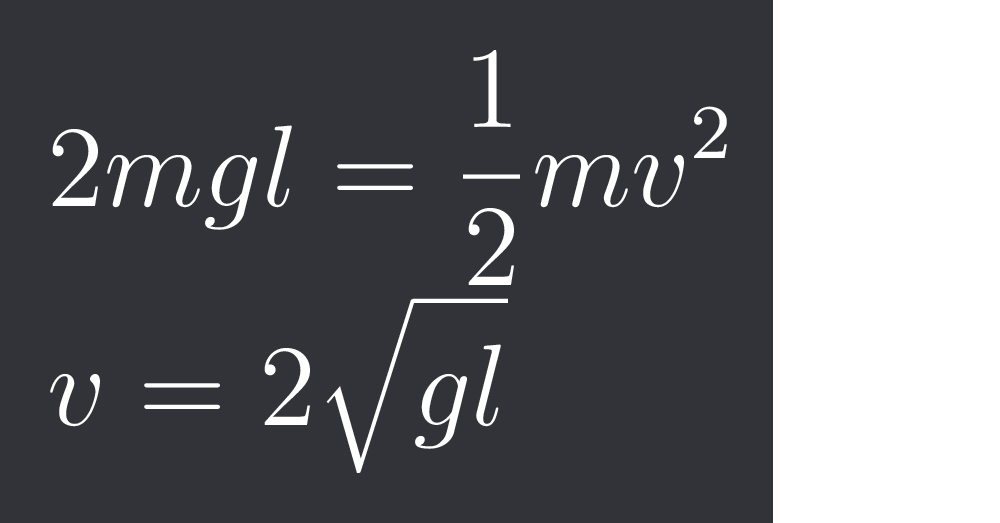25 Replies
@Gyro Gearloose
Note for OP
+solved @user1 @user2... to close the thread when your doubt is solved. Mention the users who helped you solve the doubt. This will be added to their stats.

its 2 root gl
Me ek br check krluga kl
@integralofe^2v

Kaha glti h isme
Both of the objects dont have same velocity in ground frame ( only horizonral velocity same) u need to write there kinetic energies separately and theb use WET
Fir to bohot simple hogya me to bewajh complicate krra tha
$2mgl=\frac{1}{2}mv^2 \newline
v=2\sqrt{gl}$
Real potato

@integralofe^2v right?
wha how did u do this, i used a diff approach like a long method
I just applied wet for that small mass m on the rod
Koi or external force to hai nhi vertical velocity dene ?
@integralofe^2v
yes but shoulnt u also include velocity of the plank too as the potential energy is also transferred to it?
Velocity of planck will be v only na? momentum conservation
firse ans root2gl ajayega:hmmm:
Can u show ur method
yes ill show
Yeah please
heres my long ass solution, dot means derivative wrt time so x dot is horizontal velocity and also im working in ground frame.

Wth this is so confusing man:aah:
hmm it is i agree but se ebasiclly like in groudn frame i wrote the coordinates for both plank and ball right? and for ball's x coordinate the horiontal disp of plank will also be added right? and then i differentiated them wrt time to get there velocities, now i used energy conservation since plank can onyl move horizontally its simple 1/2 * m * v^2 and for ball u can solve it, now i used toruqe about hinge to find angular velocity of ball as a function of theta and u can write angular accelration as omega * d(omega)/d(theta) like u write a as vdv/dx and then yea just put theta as 180
Okay thats lil bit complex for me ill try to process it
let me see if theres a simpler approach.
Yeah please do ill try it again tomorrow
we good?